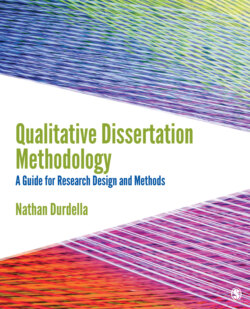Читать книгу Qualitative Dissertation Methodology - Nathan Durdella - Страница 58
На сайте Литреса книга снята с продажи.
New technologies and media reshape boundaries in research and writing.
ОглавлениеAs academic institutions adjust to emerging and new technologies, changes in how students approach dissertation research and writing have occurred (Barton, 2005). With new interactivity in technology platforms and new media applications in many fields, the possibilities to move outside of what some students and faculty see as an outmoded, outdated “flat” dissertation format are appealing. Indeed, the Council of Graduate Schools (2009, p. 14) argued, “In the future, graduate education must grapple with encouraging new outputs such as three-dimensional models, video footage, and non-linear projects. It is likely that in the future these and other innovative forms of the presentation of research will come to dominate graduate education.”
Overcoming arguments about the lack of rigor and misapplication of standards for research and writing in the field, an increasing cadre of thought leaders and policy makers, campus leaders and faculty advisors, and graduate students advocate for digitizing and activating, so to speak, the traditional dissertation format through digital applications. And there is increasing evidence that new media (i.e., open access or electronically published) may not translate to fewer opportunities to publish in traditional scholarly publishing (Ramirez, Dalton, McMillan, Read, & Seamans, 2013)—buttressing arguments to allow students to adopt such formats for their dissertation work.
